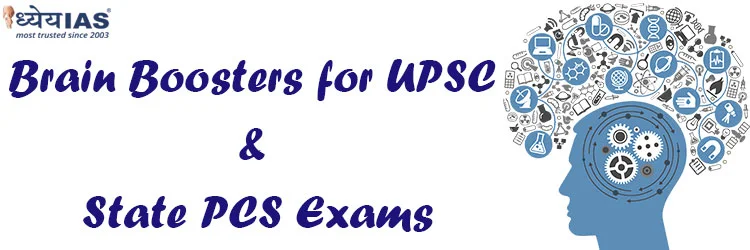Brain Booster for UPSC & State PCS Examination
Topic: Individual Contribution to NDRF

Why in News?
- Nearly 15 years after the Disaster Management Act was passed, the Narendra Modi government has finally issued guidelines to allow any person or institution to contribute directly to the National Disaster Response Fund (NDRF) set up under the Act.
Background
- The decision came after Commodore LokeshBatra (Retd.) wrote to the National Disaster Management Authority (NDMA), which handles the NDRF, in late April seeking details on the procedure for contributing directly to the fund. He later filed an RTI with the finance ministry over this.
- Before PM-CARES, the mode of donations to the central government in the face of calamities was the Prime Minister National Relief Fund.
PIL to Use NDRF
- A PIL has also been filed in the Supreme Court by the Centre for Public Interest Litigations to transfer funds collected in the PM-CARES for COVID-19 management to the NDRF.
- The PM Cares Fund was set up by the central government on March 28 as a public charitable trust with the primary objective of dealing with any kind of emergency or distress situation such as that posed by COVID-19 pandemic.
- Section 11 of the Disaster Management (DM) Act makes it mandatory for a national plan to be drawn up for disaster management for whole of the country but currently, there is no such national plan in place to deal with the on-going COVID-19 pandemic even though the same has been notified as a ‘disaster’ and numerous notifications are being issued to contain the same under the DM Act.
- Petitioner has said that currently, NDRF is not being utilized in fighting the on-going COVID-19 and a PM-CARES Fund has been constituted instead, outside the purview and ambit of DM Act, as a public charitable trust and ail the contributions/ donations with regard to the COVID-19 pandemic are being made to the said fund in violation of clear statutory provisions.
Significance
- This is a significant development at a time when many have expressed concerns about donations sent to the PM CARES Fund or the Prime Minister’s National Relief Fund, as both claim they are not public authorities subject to questions under the Right to Information Act.
- The Supreme Court sought a response from the Centre to a plea that contributions made to the PM CARES Fund to fight COVID19should be transferred entirely to the NDRF. ( Unlike the NDRF, which is subject to audit by the Comptroller and Auditor General of India, it is unclear whether the PM-CARES fall within the CAG ambit. There is no clarity on the amount collected under PM-CARES either.
About NDRF/SDRF
- The National Disaster Response Fund (NDRF), constituted under Section 46 of the DM Act, 2005, supplements SDRF of a state, in case of a disaster of severe nature, provided adequate funds are not available in SDRF.
- The State Disaster Response Fund (SDRF), constituted under Section 48 (1) (a) of the Disaster Management Act, 2005, is the primary fund available with State Governments for responses to notified disasters. The Central Government contributes 75% of SDRF allocation for general category States/UTs and 90% for special category States/UTs (NE States, Sikkim, Uttarakhand, Himachal Pradesh, and Jammu and Kashmir).









